
The three paratroopers casting eyes upward at the Western Wall. The troops reveling in the waters of the Suez Canal. The sweeping views of a Galilee no longer vulnerable to shelling from atop the Golan Heights.
Not to mention Naomi Shemer’s anthem “Jerusalem of Gold,” reissued after the Six-Day War with a new verse celebrating access to the Old City. Or the settlements, the Palestinians, the tensions, the violence.
These – and many others – are the images, memories and challenges that persist after 50 years of triumph, soul searching and grief.
But there are anomalies – small, telling wrinkles in what the war wrought – that, if not quite forgotten, have faded into the recesses of memory. They are worth reviving to deepen our understanding of an event that changed Jewish history.
For 20 years, Jews paid fees to a symbol of Palestinian pride.
In the wake of Jerusalem’s reunification, its mayor, Teddy Kollek, was faced with a dilemma: Jewish neighborhoods were sprouting up in the eastern part of the city. Any attempt to extend electricity to them from the electricity provider in Israel would likely elicit local and international protest because the world did not recognize Israel’s claims to the city.
Kollek’s solution: Allow the Palestinian-run Jerusalem District Electric Company, or JDEC, predating Israel’s establishment, to continue providing power in and around the Old City, including the new Jewish neighborhoods.
So until 1987, Jews living in the Old City and the new neighborhoods received electric bills that seemed a mirror image of their other utility bills: First the text was in Arabic, then in Hebrew.
The JDEC held exclusive rights to a radius of 50 kilometers, or 31 miles, around the Church of the Holy Sepulchre, the Old City site believed to be the site of Jesus’ burial.
After 1948, Israel assumed responsibility for providing electricity to western Jerusalem.
The JDEC, which had become a symbol of Palestinian aspirations for independence, was helmed by Anwar Nusseibeh, the scion of an ancient Palestinian family.
According to the 1999 book “Separate and Unequal,” about relations between Jews and Arabs in Jerusalem, even after the JDEC’s limited capacities were exhausted by the rapidly expanding demand, Israeli authorities balked at extending the Israel Electric Corp.’s reach into eastern Jerusalem. Instead, the Israeli company sold capacity to the JDEC.
In December 1987, the government finally – quietly – shifted total responsibility for the Jewish neighborhoods to the Israeli company.
“Separate and Unequal,” penned by three Israelis – Amir Cheshin and Avi Melamed, two former municipality liaisons to the city’s Palestinian population, and journalist Bill Hutman – cited the conundrum as an example of the balancing act that Israeli officials had to perform: Maintaining a Jewish claim to the entire city, while at times deferring to Palestinian nationalism, in order to keep the peace.
“Israel could not expect to wipe out an important Palestinian national symbol without a reaction, possibly a severe reaction, from the Palestinian public,” they wrote.
The JDEC still exists, albeit providing electricity only to Palestinian residents.
King Hussein longed for peace — and liked his Israeli hardware.
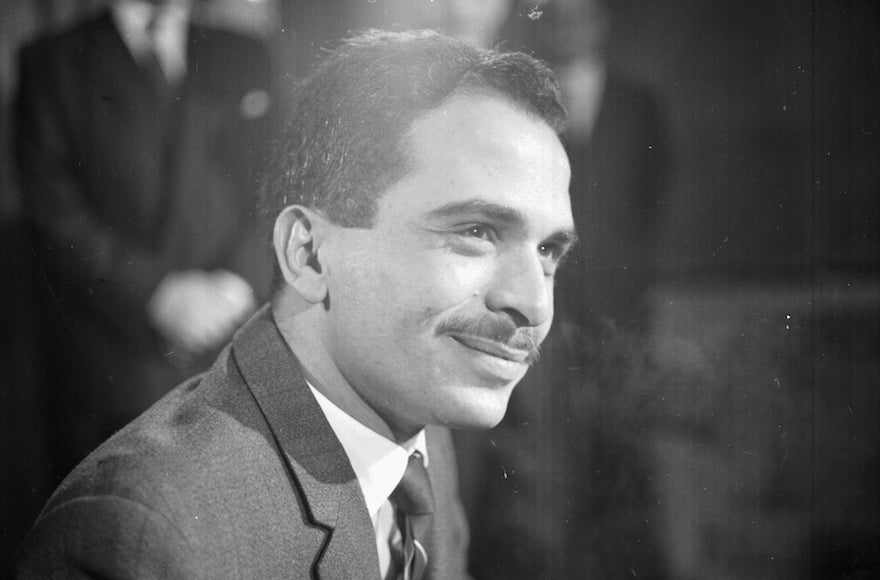
King Hussein of Jordan at London Airport, May 4, 1964. (George Stroud/Express/Getty Images)
During most of his reign, King Hussein of Jordan sought a peaceful arrangement with Israel, taking a cue from his beloved grandfather, King Abdullah I, whom he saw assassinated in Jerusalem in 1951 because he was seeking peace with Israel.
Like his grandfather, he sought peace in secret but did not escape opprobrium – and was wary of meeting Abdullah’s fate. Hussein felt he had little choice but to join President Gamal Abdel Nasser of Egypt in saber rattling against Israel in 1967 – Nasser, wildly popular in the Arab world, had already taunted the king as being subservient to Israel.
Moreover, Israel had humiliated Hussein a year earlier with a massive daylight raid into his territory to exact revenge for an attack carried out by Palestinian Fatah troops, who then operated with relative impunity from Jordanian soil.
According to historian Martin Gilbert’s “Jerusalem Illustrated History Atlas,” on June 4, 1967, Israeli Prime Minister Levi Eshkol relayed a message to Hussein: “We shall not initiate any action whatsoever against Jordan. However, should Jordan open hostilities, we shall react with all our might and (Hussein) will have to bear the full responsibility for all the consequences.”
At 8:30 a.m. the following day, Jordan started shelling western Jerusalem, and at 9:30 a.m., Hussein broadcast, “The hour of revenge has come.”
That kind of talk and the ensuing bloody battles — plus prior years that witnessed the destruction of Jewish properties in eastern Jerusalem and Hussein’s refusal for 19 years to allow Jewish access to the Western Wall — left some Israelis wondering whether Hussein truly sought peace.
The answers came over time – King Hussein drove Fatah out of Jordan in 1970 and in 1973 waited out the Yom Kippur War. In 1986, he came close to signing a peace deal with Israel.
In 1994, symbols bold and subtle made evident that Hussein had earned the trust of leading Israelis. The king was present at Israel’s Arava terminal when Israeli Prime Minister Yitzhak Rabin signed a peace treaty with his Jordanian counterpart, Abdelsalam al-Majali.
The next day Maariv, a newspaper then owned by the Nimrodi family, published a full-page photo captioned “1965, collection of Yaakov Nimrodi,” with no other comment. Nimrodi, the clan patriarch, was Israel’s leading private arms dealer.
In the photo, a smiling King Hussein is cradling an Israeli-manufactured Uzi submachine gun.
When did Israel unite Jerusalem? Did it unite Jerusalem?
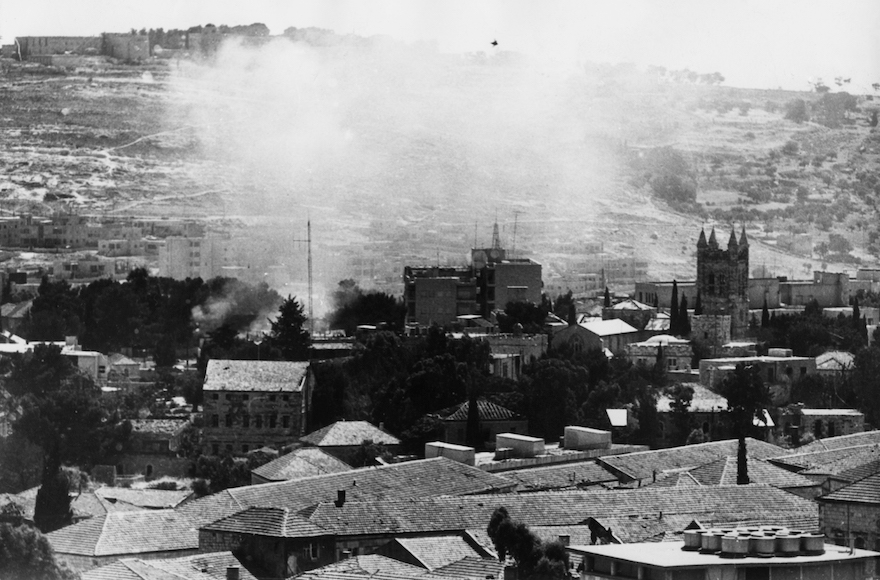
Smoke rising from the Old City of Jerusalem during the Six-Day War, June 1967. (Keystone/Hulton Archive/Getty Images)
“The future belongs to the complete Jerusalem that shall never again be divided,” Prime Minister Benjamin Netanyahu said two years ago on Jerusalem Day, which marks the Hebrew calendar anniversary of Israel’s capture of eastern Jerusalem during the Six-Day War.
The adjectives vary – “complete,” “united,” “indivisible” — but the meaning is clear enough: Israel will never cede an inch of the Jerusalem it reunited.
Except when it formally reunited Jerusalem is not so clear: 1967? 1980? 2000? Ever?
On June 27, 1967, less than three weeks after the war’s end, Israel’s Knesset passed ordinances that allowed Israeli officials to extend Israeli law into areas of their designations. The next day, the Interior Ministry acted on those new ordinances, extending Israeli law into the areas that now constitute the Jerusalem municipality. They included 28 Palestinian villages, the Old City and what had been defined by Jordan as municipal Jerusalem.
So, June 28, 1967, apparently is when Israel “united” Jerusalem. Except Ian Lustick, a professor at the University of Pennsylvania, published a widely cited paper in 1997 that showed unification was not necessarily the intention of the 1967 ordinances.
An Interior Ministry news release on June 28, 1967, said the “basic purpose” of its order was “to provide full municipal and social services to all inhabitants of the city.” Absent was any expression of political purpose.
Not long after, Abba Eban, then Israel’s foreign minister, told the United Nations that the ordinances had a practical, not a national consequence.
“The term ‘annexation’ is out of place,” he said. “The measures adopted related to the integration of Jerusalem in the administrative and municipal spheres and furnish a legal basis for the protection of the Holy Places.”
As Lustick noted, even within these parameters, anomalies persisted: For decades, Jordanian curricula prevailed in Palestinian schools in eastern Jerusalem.
In 1980, the Knesset passed a Basic Law – what passes in Israel for a constitution – declaring united Jerusalem to be Israeli. “The complete and united Jerusalem is the capital of Israel,” it said.
But left out of the law was a definition of what constituted the “complete and united” Jerusalem. It took until 2000 for the Knesset to pass an amendment to the 1980 Basic Law specifying that Jerusalem was defined by the Interior Ministry order of June 28, 1967.
So was 2000 when Israel formally set down in law what constituted the united, indivisible, complete Jerusalem?
Not exactly, according to a Haaretz analysis in 2015, which said the 1980 law is essentially declarative: Nowhere does it include the words “annexation” or “sovereignty.”
Marshall Breger and Thomas Idinopulos, in a 1998 Washington Institute for Near East Policy tract, “Jerusalem’s Holy Places and the Peace Process,” suggest that these are distinctions without a difference and say that Israeli court decisions that treat eastern Jerusalem as essentially annexed should be determinative.
The first Jewish settlement in the captured territories
There are plenty of dramatic markers in the history of the return of Jews to the areas Israel captured in the Six-Day War:
The first homes reoccupied by Jews in the Old City’s Jewish Quarter, in 1969; the Jews, led by Rabbi Moshe Levinger, who moved into a Hebron hotel to mark Passover 1968 and would not leave until the government allowed them to establish the settlement that would become Kiryat Arba; the settlers who would not leave the area of Sebastia in the northern West Bank until the government in 1975 allowed them to establish Elon Moreh.
But the first settlement? That would be Merom Golan, a kibbutz originally named Kibbutz Golan, when Israelis quietly moved in on July 14, 1967, just over a month after the war.
Why the urgency? A clue is in who founded the kibbutz: Israelis from the eastern Galilee, who had suffered potshots and shelling from Syrian troops for years.
The Israeli attachment to the West Bank and to Jerusalem has been from the outset one defined by emotion, history and identity. Occupying and settling the Golan Heights — an area traditionally not defined as within the boundaries of the biblical Land of Israel — was seen as a matter of security and practical necessity: Israel, atop the Golan, was less vulnerable.
These days, Merom Golan is a resort.
That ancient church in Gaza? It was a synagogue.
The Western Wall, Qumran, Shiloh, King Herod’s tomb – the Six-Day War was a boon for historians seeking evidence of ancient Jewish settlement in the Holy Land.
Most of these sites are in the West Bank and eastern Jerusalem. But a team of archaeologists rushed to the Gaza Strip within weeks of its capture.
Why? In 1966, Egypt’s Department of Antiquities announced the discovery of what it said was an ancient church on Gaza’s coast. Examining the pictures in the Italian antiquities journal Orientala, Israeli archaeologists immediately understood it was no church – it was a synagogue.
Visible in one photograph was a Hebrew inscription, “David,” alongside a harpist – King David.
According to an article published in 1994 in Biblical Archaeology Review, by the time the Israelis reached it a year later, the David mosaic had been damaged – evidence perhaps that the Egyptians understood that the biblical king’s depiction validated claims of ancient Jewish settlement and sought to erase it.
They set about excavating the site, which turned out to be one of the largest Byzantine-era synagogues in the region.
At the foot of one mosaic they found the following inscription: “(We) Menahem and Yeshua, sons of the late Isai (Jesse), wood traders, as a sign of respect for a most holy place, donated this mosaic in the month of Louos (the year of) 569.”
The quiet reunifications

Israeli soldiers approaching the Dome on the Rock in Jerusalem, June 7, 1967. (Newsmakers/Getty Images)
This was the myth: Between 1949 and 1967, the heart of a city identified since the beginnings of history with the Jews had been made Judenrein.
The myth was largely based in fact, but there were exceptions: Every two weeks, a convoy of Israeli troops would travel through Jordanian Jerusalem to Mount Scopus, the Hebrew University campus that remained Israel’s as part of the 1949 armistice. Intrepid non-Israeli Jews occasionally passed through the Mandelbaum Gate, the gateway between Jordanian and Israeli Jerusalem. Muriel Spark, the Scottish novelist, captured the danger in such a crossing in her 1961 novel “The Mandelbaum Gate.”
And then there were stories like this one: In 1991, the building where I owned an apartment obtained permission from the municipality to add rooms and balconies. The contractor subcontracted some of the work. One day, a gregarious Palestinian subcontractor came by to measure my balcony for the railing he would build.
But the contractor disappeared just before completing the job. I paid others to complete the work and asked around for the number of the subcontractor.
He lived in Silwan, the ancient neighborhood abutting the Old City. I called.
A woman speaking fluent Hebrew answered; this in itself was striking. It was not unusual for Palestinian men, who worked throughout Israel, to speak Hebrew, but it was a rarity at the time to encounter a Hebrew-speaking Palestinian woman. Moreover, her Hebrew was unaccented and flawless.
She was the subcontractor’s mother. Of course he would come and install the railing, it was gathering dust in their yard, and he had forgotten my exact address, she said Not only that, but I wasn’t to pay him a shekel extra, he had been paid for his work and wouldn’t hear of it.
I couldn’t resist asking her to explain her Hebrew.
She was Jewish, born and raised in Jerusalem. She had married a Palestinian Muslim before independence. And she remained in Silwan after the war. Did she reunite with family? Yes, she said, immediately after the Six-Day War, but would not elaborate.
The subcontractor came by.
“I spoke to your mother,” I said.
“Yes,” he said and smiled.
I asked the neighbors who had used the same contractor, I asked other Jerusalemites, and no one expressed surprise.
They had heard similar stories of excommunication and then tentative reunification. How many were there? No one knew. No one compiled these stories. There was no shame to the phenomenon, but neither was there a celebration of it.
It seemed unresolved, like so much else about the Six-Day War.
RELATED:







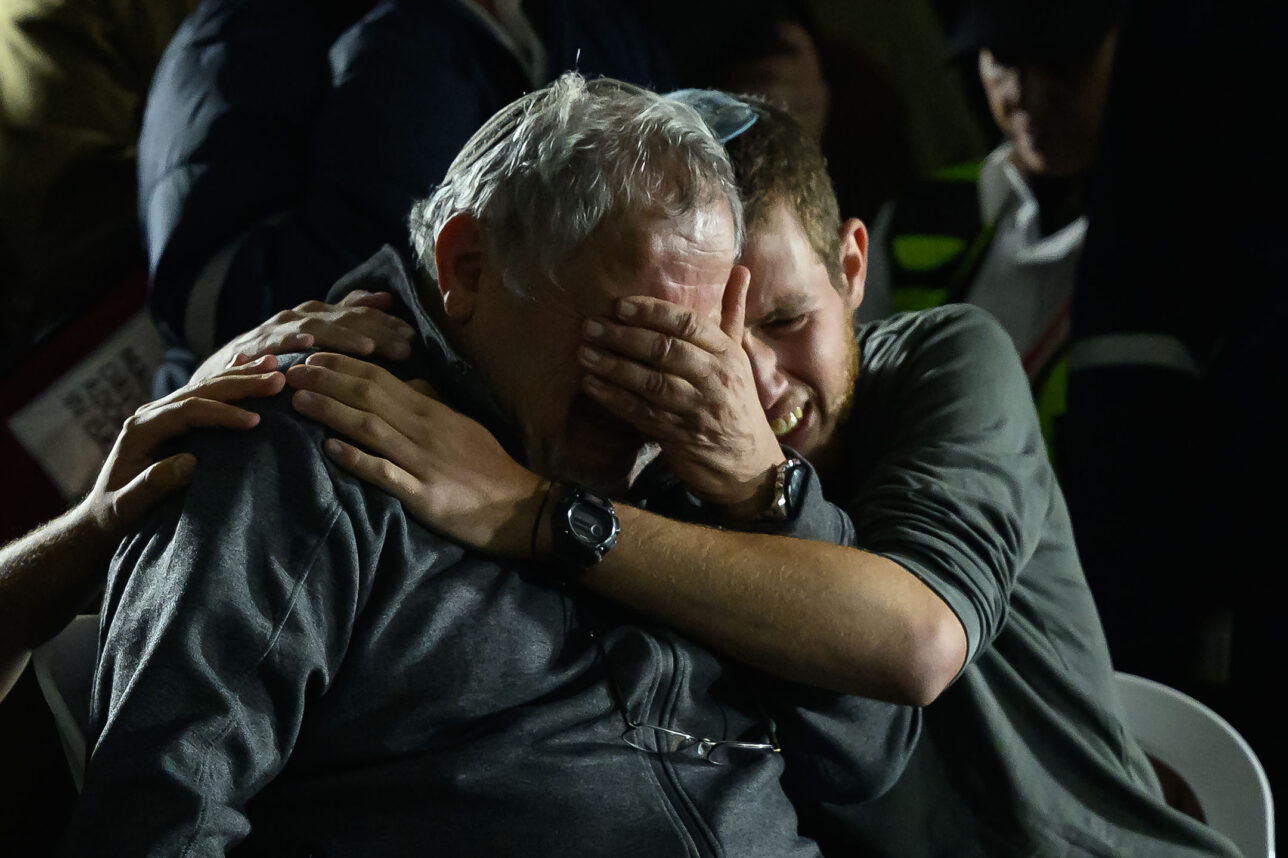





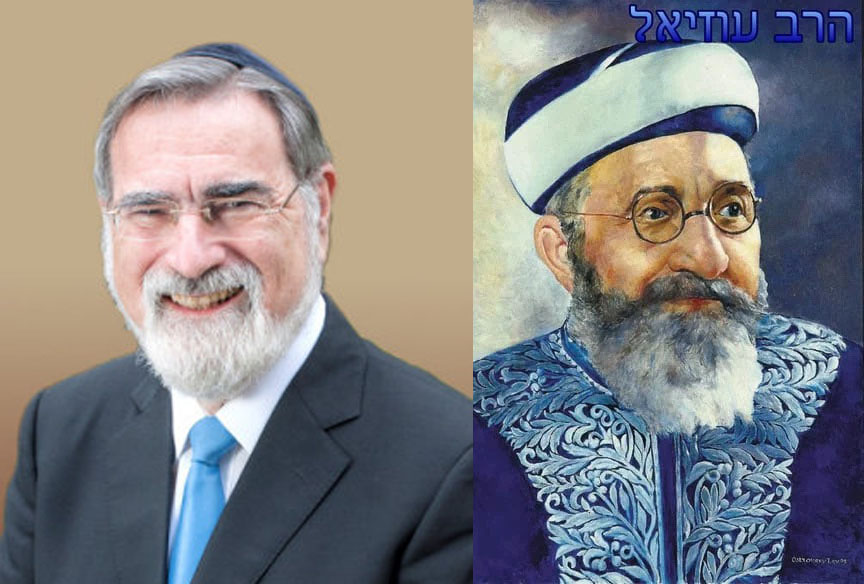
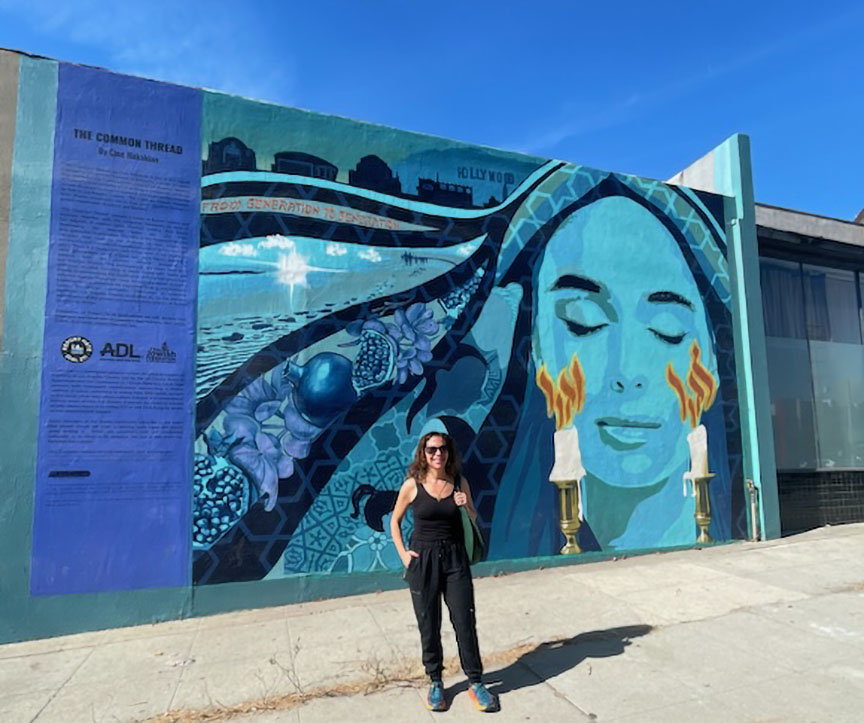
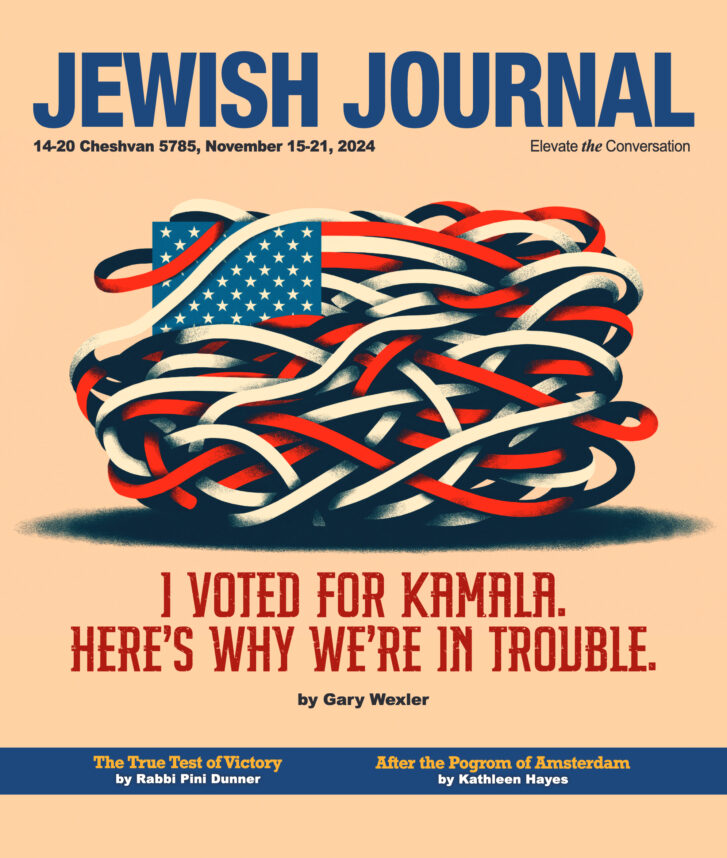






 More news and opinions than at a Shabbat dinner, right in your inbox.
More news and opinions than at a Shabbat dinner, right in your inbox.